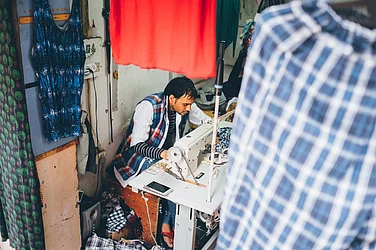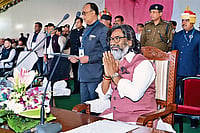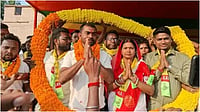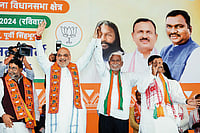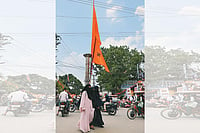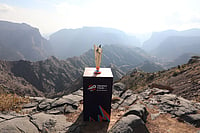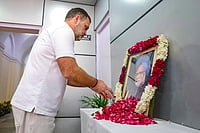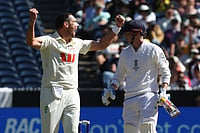Indian students are introduced to the cow when we learn to write in primary school: “Cows give us milk”. This common refrain, without any interrogation, stays with us for long until we unlearn enough to learn the multiplicities of perceptions that shape the views on cows by Adivasis, Dalits, Christians (and not just Adivasi and Dalit Christians), Muslims and other minorities.
The first time I heard the inverted “Cows don’t give us milk; rather we take it from them,” it was a moment of contemplation. Several Adivasi communities staying in different regions of the country, ranging from Jharkhand to Tripura, still don’t use the cow as a source of milk; rather they prefer to keep it for their calves who need the strength for ploughing the land.
The rationality behind not consuming cow milk, however, differs depending on the region and traditions therein. In Bagmara, a small village at Rupaichari Block in South Tripura district, Tripuri Adivasis consider it a sin to milk a cow. In 2010, though the district administration took up some efforts to change their practice, citing lack of nutrition among children, nothing much has changed. Similar traditions are found in some villages of Rampachodavaram, a census town in Andhra Pradesh, where they don’t milk cows. Instead, for nutrients, they depend on fruits, vegetables and other forest produce.
The same story resonates among the Ho and Asura communities in Jharkhand who still prefer to have black tea as cow milk is the last thing they wish to deprive the calves of. Speaking to Outlook, renowned Sarna leader, Bandhan Tigga, says, “We don’t need to use cow milk as the requirements of our children are fulfilled by their mothers’ breastmilk. Our parents take such good foods, termed as Jungli fruits and vegetables by ‘civilised’ people, that they produce enough milk to fulfil the children’s needs.”
Emphasising their departure from urban modernity where “mothers can’t even breastfeed their only child,” Tigga continues, “Adivasi mothers can breast-feed even 10-15 children.” Referring to the food habits of Adivasis, he adds that the very practice of eating different kinds of saag (leafy green vegetables) in a soupy form gives them the immunity required for strength. “While science says that mothers should breastfeed their children at least for two years, our Adivasi mothers do it for almost three years since the birth of the child,” says Tigga.
The access to diverse sources of protein and its sufficiency, however, are not the only reason for them to not consume cow milk. Poet and Adivasi activist, Sushma Asur, tells Outlook, “Cow milk is reserved for their calves. They need strength as they have to plough our lands.” Referring to the recent habit of taking tea among Adivasis, the poet adds, “We never used to take tea. It is a very new thing for us. We use cows for cultivation purposes and take them for rounds across our jungles and green lands.”
This practice also comes from the ideals of ‘Ecosophy’ that connect ecology with social aspects. Conceptualised majorly by Norwegian ecologist Arne Naess and French philosopher Félix Guattari, this notion tries to transform society through an ecological perspective. It talks about mutually syncretic behaviour among humans and non-human agents of nature. Talking about their connections to nature as reflected in everyday practices, Tigga says, “We love every constituent of nature. When we take water, we pour three drops on the earth and then take it. Even while eating, we give offerings to our ancestors. If somebody dies, for the rituals, we throw rice on the earth, so the ants and insects participate in the bhoj (feast).” Such a relationship with nature is so embedded that we can’t even think of taking away what rightfully belongs to the calves, he adds.
The Adivasis, nevertheless, have multidimensional relations with cows and buffaloes. Foremost Adivasi scholar, Ram Dayal Munda, while talking about the rituals and festivals of Adivasis in his book Adi-Dharam, refers to Sohrai, a festival that celebrates cattle on the new moon day of Kartik month (between October and November). This festival is all about honouring cows and buffaloes for their tireless support in paddy cultivation.
Anand Marandi, an Adivasi activist closely connected to the NGO Samvad, tells Outlook, “Of the three-day festival, the first day is known as Um. You can call it Nahan in Hindi as found in Chatth celebration.” On this day, first, the men gather at Got tandi (a place where the village people meet for performing rituals and celebrations) and make offerings to their gods and ancestors. Following that, they eat khichdi and other foods made out of the things they bring from their respective houses and make rice beer.
“Before we go back to our villages, we follow a beautiful ritual. During the evening, when the cattle get back to their shelter, the priests or nayaks place eggs on their way. The cow that hits the egg with her leg is considered to be ‘lucky’ and her owner in turn distributes rice beer among the other villagers in joy,” says Marandi.
The second day of Sohrai is called Dakaye. On that day, everybody celebrates in their own house. They dress up their cows, put vermillion and oil on their horns and perform a sort of puja. Is it in some way or the other similar to Hindu traditions? Marandi says, “No, this is totally different from the way Hindus celebrate and worship cows. It is all about showing respect to the animals who support us in cultivation. We sing different songs and the villagers gather in the early morning to wake their cattle up.”
An intense sense of sharing could also be found here as they share the food in the same plate with the cow. “During Sohrai, we would make food for cows and share the same plates and eat. As they start taking the food, we pick up it up from there and have a bite,” says Tigga.
The third day of Sohrai is known as Khuntao when, at the village meeting spot, Adivasis tie the cows with a pole and celebrate their presence with singing and dancing. “We play the madol (a musical instrument)and try to make the cows and buffaloes happy,” notes Marandi. Though he refers to Sohrai as a Santhali festival, Sushma Asur says, “We also celebrate Sohrai. It is prevalent among most Adivasi communities.”
The perception of cows is not that of a ‘mother,’ unlike that of North Indian Hindus. “During Sarna puja, Adivasis even sacrifice a bacchiya, a calf that is neither too young nor has reached the age of reproduction,” says the Sarna leader. “This tradition, though now discontinued, came during the Aryan invasion of our land. To safeguard our God, that is earth, we used to sacrifice them,” Tigga adds.
So, amidst these multidimensional relations, how do Adivasis perceive cows? “We consider them as friends who help us in cultivation and thus we honour them and they were even sacrificed for the larger cause of saving our lands and cultural individuality,” says Tigga, who has been in the forefront of the Sarna dharma movement in Jharkhand and the neighbouring states.
While we talk about the Anthropocene and fear the destruction we have visited upon nature, Adivasis celebrate every component, from animate to inanimate, in their own way. A mantra that the Adivasis recite during Sarhul, to welcome the Sal flower that signals the beginning of the season of cultivation, reads:
Oh Great Spirit of high heavens.
Mother Earth down below.
You rise like milk,
you set like curd...
...We invite you, we call upon you.
You sit with us, you talk with us.
A cup of rice beer,
a plate of mixed gruel.
You drink with us, you eat with us.
(Translated by Dr. Ramdayal Munda)
At a time when the appropriation of Adivasis has become the major objective of right-wing Hindutva forces, the celebration of cows and the Adivasi association with cattle may be taken as a point of commonality between the two. But to avoid such (mis)appropriation, one must recall the words of the late poet and scholar Abhay Xaxa, who in his poem, ‘I am not your data’, had written,
So I draw my own picture, and invent my own grammar,
I make my own tools to fight my own battle,
For me, my people, my world, and my Adivasi self!
(This appeared in the print edition as "The Cow As Friend")













